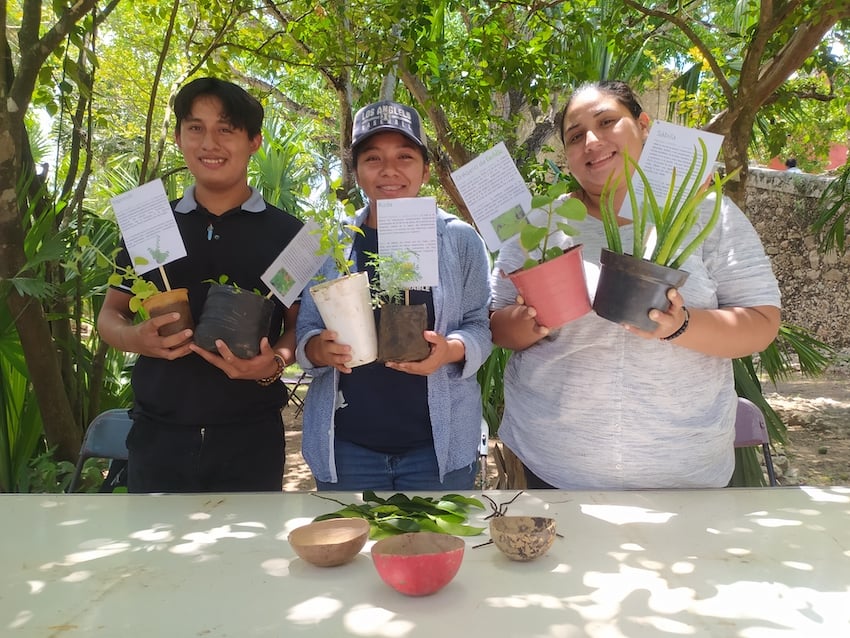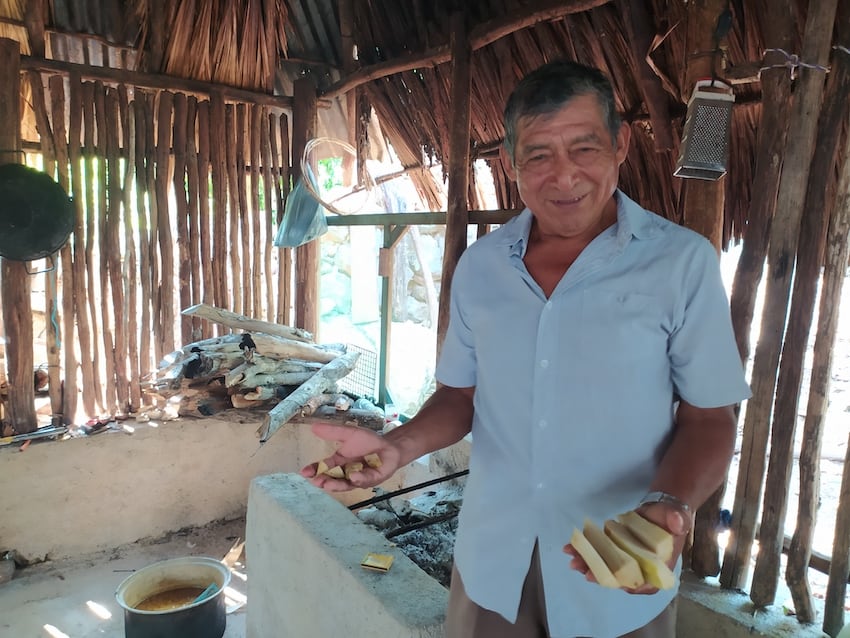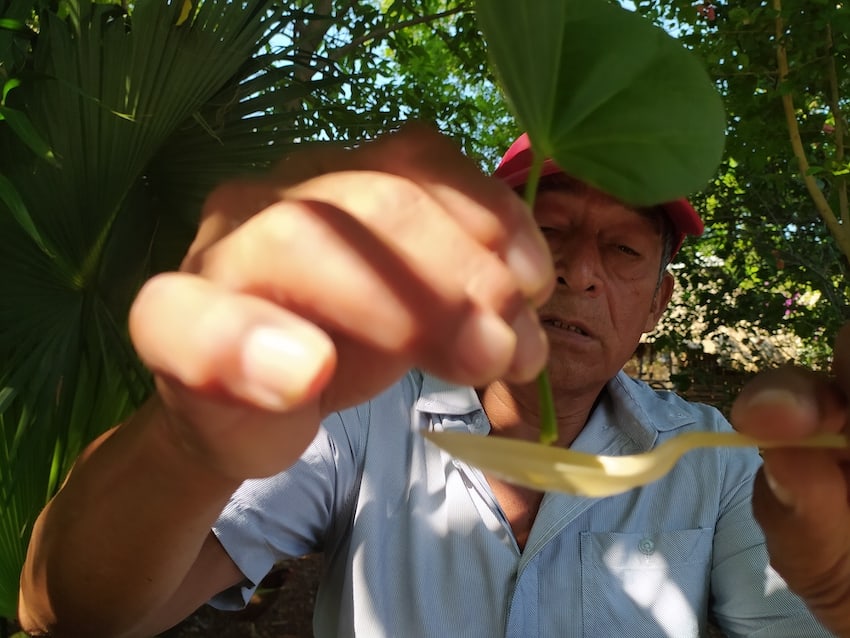Mexico has the second highest number of registered medicinal plants on the planet at 4,500, according to the National Institute of Research into Forestry, Agriculture and Livestock (Inifap).
According to Balbina Vázquez Benítez, M.S., a senior researcher at the National Autonomous University of Mexico (UNAM), 90% of Mexicans use or have used medicinal plants for treatment, but only 5% of species have been researched scientifically.

“Mexico is second place in the world on the register of the use of medicinal plants, just behind China,” Vázquez Benítez said during a 2022 forum by Mexico’s National Institute of Forestry, Farming, and Livestock Research. “This demonstrates the need to establish comprehensive plans and protocols for the propagation and production of medicinal plants to expand biodiversity.”
Using natural methods to treat illness continues to be an option for the peninsular Maya peoples. Yet Dr. Javier Hirose López from the Eastern University Valladolid, Yucatan, said in a 2018 study that the practice of traditional Mayan medicine could be considered “knowledge on the verge of extinction.”
“Globalization and migration to large urban centers such as Mérida and Cancun have modified the way in which rural populations solve their health problems,” he said. “Added to this, the scarcity of apprentices receiving this knowledge has led to [Maya traditional medicine] being considered under threat or in danger of disappearing.”
A key to unlocking this knowledge of traditional medicine rooted in centuries ago is finding out what current-day elders know. One of these is elders isa Don Manuel de Jesús Pech Cob, 72, an unassuming custodian of ancestral wisdom who lives in the town of Yaxcabá.

He has seen his town grow to 3,000 people in a short time — as families that left for city life decades ago have returned since discovering that the Maya Train would be stopping 18 miles away from Yaxcabá, potentially bringing a more economically viable way of life here.
This mass return has meant that Pech has also seen a resulting destruction of his town’s surrounding wilderness — where he has always gathered plants and herbs for a wide range of remedies he learned from his grandparents, before conventional medicine was commonplace in Yaxcabá.
Don Manuel learned about the marvels of Kat ku’uk (Parmentiera aculeate), known in English as cow okra, a plant renowned for its diverse uses. When washed thoroughly and boiled in pure water, Kat ku’uk makes a strong tea that cleanses the body of kidney stones. Don Manuel claims that the potent infusion, which includes corn hairs, and which he consumes all day like any other tea, dissolves crystals before they become larger and more painful.
However, Kat ku’uk’s uses aren’t limited to medicine: it also adds a unique flavor to food. Don Manuel cherishes the memories from his childhood, when his mother regularly prepared Kat ku’uk delicacies — a wholesome addition to chicken soup, a mouthwatering dessert.
In another dish, the magic of Kat ku’uk unfolds as it is cut into strips, washed with a hint of lime to extract its natural sugars, and marinated before being simmered in purified water. A dash of sugar cane or melipona honey elevates the sweetness, creating a mesmerizingly dark-hued syrup.
As a medicine, Kat ku’uk plays a vital role in Don Manuel’s life, offering relief for his slightly faulty kidney.

“I’ve been using these remedies for over 20 years, and they have kept me fit and healthy,” he said. “Using natural ingredients for medicine is just as good, and, in some cases, better than contemporary pharmaceutical treatment.
“Most modern medicine is highly processed and contains many substances, some of which can cause harm or addiction… I never have any cravings or negative effects from my remedies.”
Another mainstay plant once found in the typical Maya’s backyard was Pomol che’ (Jatropha gaumeri), commonly known as wild basil. Don Manuel fondly recalls how Pomol che’ was more than just an herb; it was an integral part of his life, healing common ailments and injuries.
“As a child, whenever I cut myself playing with my friends, I would run home to my mother so she could put some Pomol che’ sap on my injury,” he said. “In those times, access to modern medical facilities was scarce, and the knowledge of medicinal plants played a crucial role in our health and well-being.”
The sap’s coagulative properties are valuable not just for external wounds but also for internal ailments.
“It forms a coating inside your stomach, which helps stop bleeding and alleviates pain from gastric issues,” he continued, emphasizing the plant’s natural sterilizing effect, which combats harmful bacteria.

Despite the profound healing abilities of medicinal plants, Yaxcabá has witnessed a decline in their use. Don Manuel feels saddened that the younger generations seem to have forgotten the significance of natural remedies while the typical village diet shifts towards processed and unhealthy food. His home has tragically fallen victim to the corrosive influence of plastics and chemicals, he says.
“It is painful to live in a place once surrounded by unfathomable varieties of fruits, vegetables, plants and roots that are nourishing and medicinal, [now] left to go to waste,” he said. “The jungle offers us everything we need, and these ancient remedies likewise connect us to our cultural heritage. Unfortunately, bad habits could destroy this cherished knowledge passed down by our forefathers.”
Still, there is a growing recognition of the significance of traditional healing in restoring Maya cultural identity. Three students from the Benito Juárez García Universities for Well-Being (UBBJ) campus in Yaxcabá are fighting to revitalize interest in traditional medicine.
While pursuing their degrees in regional agricultural development, Karla Marbella Méndez Brito, 33, and her two friends felt curative plants were being relegated to the sidelines.
Her friends, Ofari Abril Manzanilla Pech, 22, and Miguel Alonso Ozih Poot, 22, were determined to recover the medicinal knowledge of their ancestors.
They interviewed village elders like Don Manuel and began transmitting this information to schoolchildren between the ages of eight and 10. The team believes that there’s room for both traditional and contemporary medicine to coexist and complement each other and improve overall health outcomes in their community.

“Traditional Mayan medicine has much to offer in terms of holistic care and deep-rooted cultural understanding, while modern medicine brings the advantages of advanced technology and evidence-based treatments,” said Ozih.
The team’s views are less rare on the global level than one might think: the World Health Organization reports that 88% of countries use traditional medicine, and more than 40% of pharmaceutical formulations are based on natural products.
“Our dependence on modern medicine has made our bodies vulnerable, and traditional medicine could be a way to live healthily and respect the natural wonders that surround us,” Ozih said. “The more we abuse modern medicine, the more our body depends on it. Pills can be addictive and destroy your life, but traditional medicine has few, if any, side effects.”
The trio hopes to encourage youngsters to value the curative abilities of their natural environment. They want to inspire future generations with the healing practices of their ancestors in a conscientious manner that incorporates the advantages of traditional and contemporary medicine. For now, they call for more government funding for research into medicinal plants and investment in the people of rural communities, the guardians of this knowledge.
Mark Viales writes for Mexico News Daily
